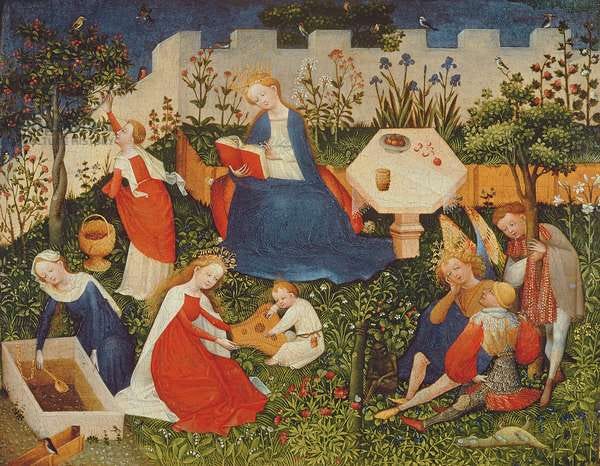Writing the Garden
I have been buzzing all this week. It’s partly because it’s May, and everything in the garden is looking beautiful. And it’s partly because my book got a write-up (a nice write-up!) in the Times Literary Supplement. I wrote my book while I was teaching at Cambridge University; it’s aimed at academics and students, and so I was thrilled to see it reviewed in a mainstream publication.
My book begins with a garden: the Garden of Eden, with its apple tree and whispers of temptation. It also deals with a poem that begins in a garden: Chaucer’s Legend of Good Women. On a May morning, the poem’s narrator puts down his book and steps out into the garden, called by the birdsong. He gazes at the close-clipped grass, ‘embroidered with sweet flowers,’ including his beloved daisies. Falling into a dream, he imagines that he sees a lady dressed in the white and green of the daisy flower, who becomes the patron of his work.
When I read Chaucer’s poem I can smell that new-cut grass; I can see those daisies already springing open again. I can trace the associations between medieval poems in terms of gardens, just as I might see how one gardener has borrowed an idea from another, taken a cutting, or saved some seed. There is the garden of the famous French poem the Roman de la Rose: a formal walled garden where the gallica roses are just coming into bud. The May-morning garden of Chaucer’s Legend of Good Women is a little newer; a little earlier in the month; its central flower is the humble daisy, not the rose. Both poets imagine the flowery garden as a kind of textile: an embroidered cloth for Chaucer and a robe for Guillaume de Lorris, author of the Roman. The anonymous The Floure and the Leafe gives us another garden again: a garden where a company of knights and ladies dance in honour of the daisy flower, and where the beautiful woman clothed in white and green is Flora, goddess of flowers.
My garden overlaps with my book because I worked on them both together. So, after I planted white madonna lilies, they stood out for me in medieval texts. When I planted herbs - hyssop and chamomile, woodruff and feverfew - I remembered that they are strewn through medieval medicinal remedies. I fell down a research rabbit hole, looking at medieval fruit-tree grafting, and it took me to the nursery where I bought three apples and two pears. I planted a medlar tree for the medlars outside my office in Cambridge, but when I re-read The Floure and the Leefe, I saw that I had a robin sitting in my medlar tree, where that poem has a goldfinch. I called this sub stack ‘Writing the Garden’ because that’s what making a garden feels like to me: a process of going back and forth between books and plants. That process makes me feel rooted, anchored: it gives my very recent garden, my very recent writing, a solid background to lean against.






